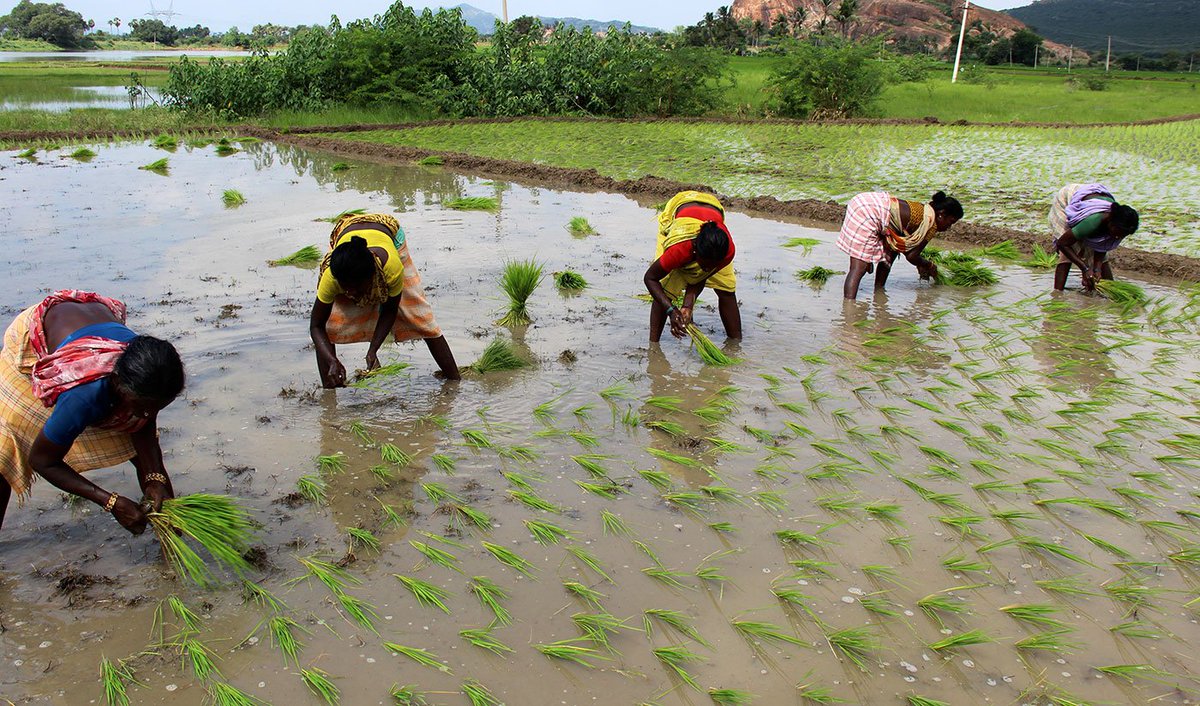The 8-member National Commission on Farmers, chaired by Prof. M.S. Swaminathan, was set up in 2004 by the UPA government to assess the extent of India’s agrarian crisis. It presented 5 reports.
Follow the thread to read its main points. #FarmersBill
https://ruralindiaonline.org/library/resource/serving-farmers-and-saving-farming-first-report/">https://ruralindiaonline.org/library/r...
Follow the thread to read its main points. #FarmersBill
https://ruralindiaonline.org/library/resource/serving-farmers-and-saving-farming-first-report/">https://ruralindiaonline.org/library/r...
This first report was to assist central and state governments in arresting the decline of farm incomes and abating farmers’ distress. It says that action must be taken immediately & that we must take Nehru’s advice from 1948: “Everything else can wait, but not agriculture.”
2/n
2/n
5 factors are central to India’s agrarian crisis: unfinished land reform agendas, quantity and quality of water, technology fatigue, accessible, adequate and timely institutional credit, and assured markets.
3/n
3/n
The crisis in agriculture arose out of a lack of appropriate public policies and adequate public investment in rural infrastructure. Most of the central and state expenditure was on the salaries of government employees.
4/n
4/n
Consequently, power, irrigation, markets, rural godowns and communication, as well as health and education remained grossly under-funded. The worst affected were small and marginal farmers, tenants and sharecroppers, and landless agricultural labourers and tribal farmers.
5/n
5/n
The cost-risk-return structure of farming adversely affected over 80 million farming families operating small holdings of 1-2 acres or less.
6/n
6/n
The report asked for initiatives like a ‘million wells recharge programme’ that would, with financial assistance, encourage farmers to channelise rainwater into their wells.
7/n
7/n
The report calls for farmers to be regarded as partners in bringing about agricultural transformation and not as beneficiaries of government programmes.
8/n
8/n
The report suggests that 50,000 farm schools should be established in the fields of successful farmers in order to share and educate others in effective farming practices.
9/n
9/n
Women play a key role in all the four major components of farming: conservation, cultivation, consumption and commerce.
10/n
10/n
The report demands a New Deal for Women in Agriculture where the concept of work is widened to include running crèches, preparing mid-day meals, undertaking immunisation of children and providing family planning services.
11/n
11/n
The use of purchased inputs by farmers has multiplied 283 times from 1950-51 to 2000-01. To meet input costs, the rural poor borrow 84 % of their credit from non-formal sources.
12/n
12/n
The report suggests that 50,000 farm schools should be established in the fields of successful farmers in order to share and educate others in effective farming practices.
13/n
13/n

 Read on Twitter
Read on Twitter


